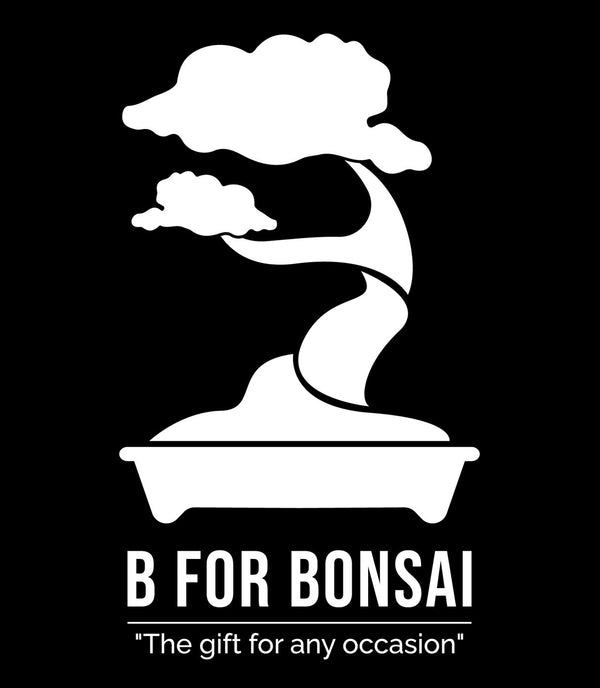Care Guide
Welcome to the wonderful world of bonsai.
Below you will find a brief but important information on how to take care of your bonsai in general. For plant specific information you may find further information on the actual listings on our website.
*** Please also watch the video below on how to water a bonsai ***
Bite-size general care guide for Bonsai
Bonsai is the reproduction of natural tree forms in miniature. This art form has its origin in Japan and China where it has been practiced for centuries. Bonsai are totally dependent on you for their survival. With proper care, your bonsai will remain healthy, beautiful and miniature for many years to come.
PLACEMENT: Keep your bonsai outside away from strong winds in an open and well-ventilated area with plenty of natural light. Your bonsai should be positioned where it will receive sufficient sun (morning sun and afternoon shade is best). Although bonsai is not an indoor plant it can be brought inside for few days. You should never leave your bonsai inside for more than five days – even if it’s placed on a windowsill. Some species are suitable indoors, however please ensure they get sufficient sun. If they look stressed it is best to return them outside in a sunny location.
How do you know if your plants aren't getting enough light?
- Smaller, stunted leaf growth
- Pale foliage
- Damp to wet potting media
- Leggy growth
How do you know if your plants are cold?
- Curling leaves
- Browning foliage and leaf drop
- Yellowing leaves
- Stunted growth
- Black spots on foliage
How do you know if your plants can't handle the heat?
- Wilting leaves
- Dry, crispy leaves (maples)
- Leaf drop
- Sunburn
WATERING: Watering is the most important part of taking care of your bonsai so it must never be neglected. You should never let your bonsai’s soil dry out. Try to inspect your bonsai daily if you are a beginner. Simply check with your finger to see if the soil is nearly dry. In general, you should water when the topsoil is dry (or nearly dry). Use a watering can or hose attachment that will cast a soft, rain-like spray so that you don’t blast the gravel/pebbles out of the pot. Water until it begins to run out of the bottom of the pot. Regardless of the season, one of the most overlooked situation of drying soil of potted plants is the effect of wind. Consisted wind can dry out plant’s root system completely in just few hours, so its always recommended to place your bonsai away from wind exposure. A good rain is usually sufficient watering in Winter.
How do you know if your plants aren't getting enough water?
- Wilting foliage
- Dry soil
- Leaf drop
How do you know if you're overwatering?
- Leaf growth stops
- Leaves develop soft, rotten areas
- Leaves begin to drop
- Soil is soaked and not drying out
FERTILIZING: Since your bonsai is growing in such a small amount of soil, fertilizing is necessary. Fertilize during the growth season from early Spring till Autumn. You may choose to use a liquid or solid one as a slow-release option. We use a mixture of Seasol and Powerfeed. Moderate application of once a month is all that's necessary to keep your bonsai growing strong.
Do not feed the plant when the leaves have fallen off, or growth has ceased. Feed with a liquid form of bonsai fertilizer according to application instructions. It is important for the soil to be moist when the plant is fertilized. This eliminates the risk of root burn.
Avoid fertilizers with a high nitrogen concentration to avoid unnecessarily large leaves and internodes.
INSECTS & DISEASES: Insects and diseases can attack bonsai just like any other plant. Inspect your bonsai regularly. A brisk spraying of the trunk and foliage periodically will help keep your tree clean. If any problems appear, most garden centers have products available for treatment.
TRAINING: A bonsai has been dwarfed by training. Training involves pruning, wiring, and repotting. Without these your bonsai will eventually get out of shape so regular pruning is necessary. Flowering varieties should be pruned back after it finishes flowering. This encourages more flower buds to form in the following year and helps maintain the compact shape. Junipers will need tip-pruning by simply pinching back new growth to maintain a compact shape.
As you progress in learning about your tree you will gradually become more aware of all the aspects of training and their use. For now, trim away any branches that don’t add to the tree you would like to design. Depending on the variety and age of your bonsai, you would need repotting once a year or every two to three years Spring to Autumn. Simply check the root system and see if the roots are circling inside the pot for more room.
If unsure, or require repotting and maintenance service please email bforbonsai@gmail.com
*Video credit Bonsai Mirai
